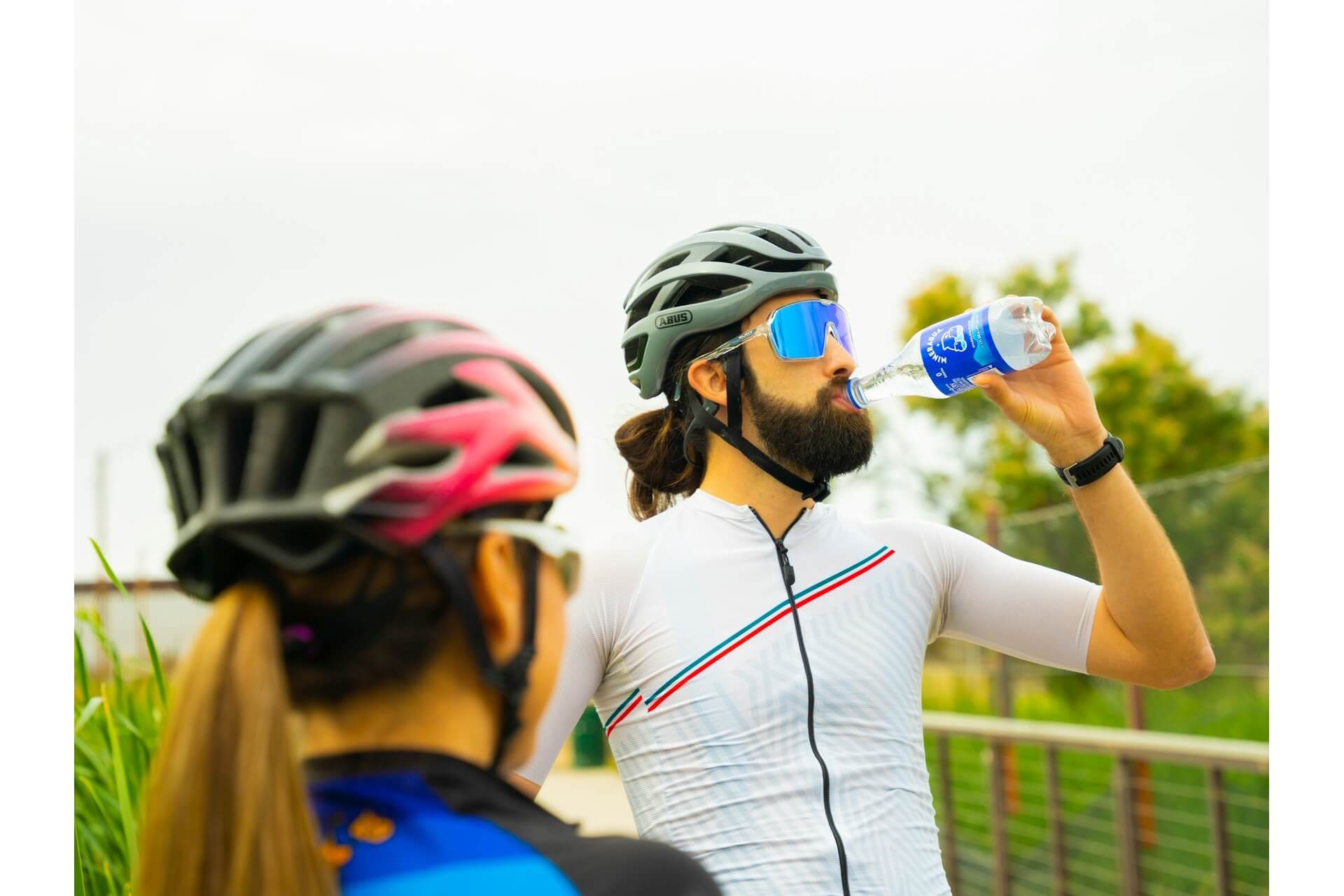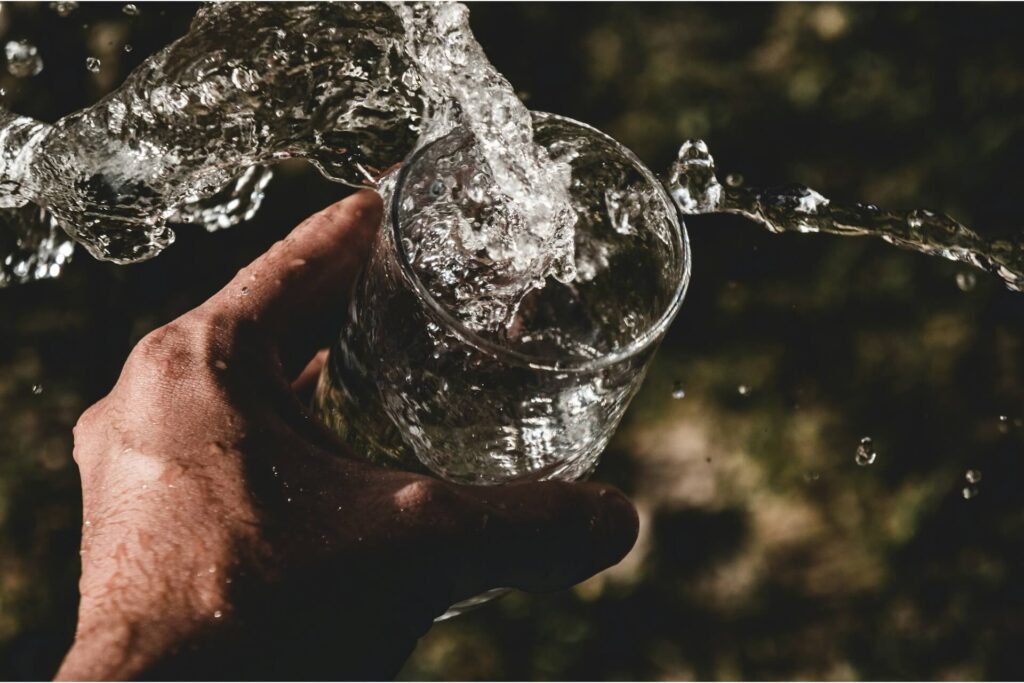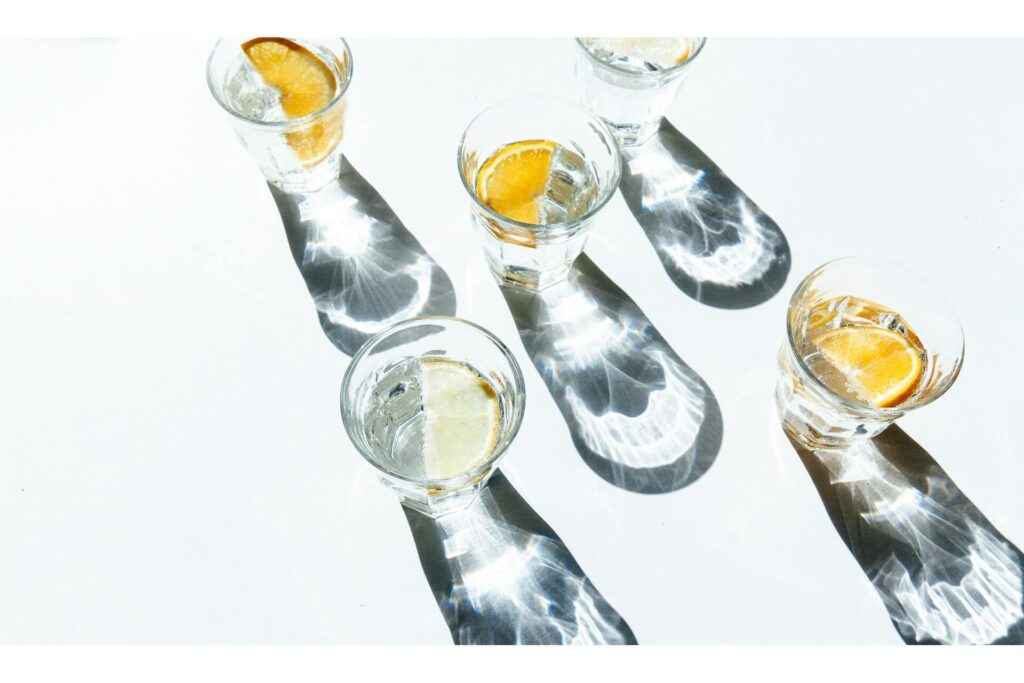
Body + Mind is reader-supported. We may earn an affiliate commission when you buy through some of the links on our site.
If you’re trying to swig away x-glasses per day — stop. You may unintentionally drink too much or too little water in a day. How much fluid is too much for you in a day depends on several things, like the weather, your activity level and your diet.
Water (H2O) is vital for a healthy life, but how much you need is unique to you, and what’s good for your partner may not be enough — or too much — for you. So, before you force yourself to gobble away gallons daily, it’s essential that you know the facts about how hydration works and the risks of drinking too much water per day.

If you’ve heard that the human body is about 60%-70% water, you’re not far off, but a few percent makes a difference. Your fluid-to-solids ratio depends on your age, gender and weight. Since fat contains less fluid than muscle, men have a higher water content than women but lower than babies. Women have the least fluid content.
Your gender, age, and overall health will determine how much water you should drink daily. It’s not a one-size-fits-all scenario. You also can’t rely on “feeling thirsty” as a sign to hydrate. When you’ve lost fluids, you also lose tissue salts, which reduces the need to drink water by lowering the thirst response.
Your body needs enough H2O to run several processes, such as digestion, circulation, waste removal, and even maintaining the shape of your tissue cells. If you are correctly hydrated, you have enough fluids and tissue salts in your body systems to process water and ensure healthy, correctly pressurized cells.
A general rule of thumb regarding water consumption is to drink eight glasses daily, which should meet most people’s hydration needs. Considering that your food also contains liquids, and you likely drink tea or coffee daily, your body’s total fluid requirements per day are 15.5 cups for men and 11.5 cups for women. Again, remember that this is an average, and you could need more than this.
You can drink too much water. Excessive H2O intake can cause severe and even life-threatening conditions. If your fluid intake exceeds what your body needs, it begins to flush healthy tissue salts from the body, which causes cells to drown. By drinking too much H2O, you can drown yourself from the inside.
Overhydration or water intoxication occurs when you drink more than your body can safely process. It negatively affects your circulation and different biological processes in the cells.
Even though you feel thirsty, you may not actually need more fluids. By being responsible and tracking your water intake, you ensure you don’t consume excess liquids, which can damage your body.
Your activity, weather, health, diet, and even genetics determine your required water intake. Now that you know you shouldn’t drink too much, let’s consider the factors determining how much fluid to drink.
Physical activity: When you exercise and are physically active, you use more water to cool your body and increase circulation. Your body will require more hydration. You should balance consuming fluids with electrolyte supplementation after intense workouts to replace lost tissue salts and minerals.
Weather: During cold days, you probably don’t drink as much as you should. However, hot days can trigger an insatiable thirst, making you drink too much. Consider the temperature and take more electrolytes to ensure healthy water intake.
Health: If you have a sudden and unexplainable thirst, it could be a sign of an underlying condition like diabetes, so consult your doctor to ensure your thirst isn’t hiding something harmful.
Diet: A diet deficient in enough fluids can trigger thirst. If your diet is salt-rich, you may need to drink more. Consider your food and ask yourself how much liquid it adds or takes from your diet.

You may have overhydrated if you’ve ever felt lightheaded after glugging a lot of H2O. Hyperhydration, water intoxication, or hyponatremia is a condition in which your cells drown in excess fluids, and brain damage can result. Other signs that you need to sip liquids instead of gulping glasses full include:
When you’re hypo-hydrated, you may vomit and feel lightheaded, experience delirium, seizures and headaches, and develop pulmonary edema. Non-critical symptoms include sudden muscle cramps and tremors.
Because too much cellular hydration affects the brain, confusion, disorientation, and a lack of coordination can occur. Sodium levels above 130 mEq per liter of fluid mark mild hypohydration, while water intoxication sees electrolyte levels under 125 mEq per fluid liter.
Other symptoms of hyponatremia include feeling nauseous but not vomiting or vomiting excessively when the brain experiences pressure. Eventually, you may slip into a coma if the electrolyte imbalance continues.
How do you keep your body hydrated without risking drowning? Here are a few ways to ensure optimal H2O intake for your body.
If you constantly feel thirsty and drink more fluids than the safe eight glasses daily, it may be time to consult your doctor to rule out hypernatremia. Monitor yourself at outdoor events or during extreme physical activity, and if drinking fluids then makes you feel dizzy, it is an early sign of hyperhydration.
Consuming electrolytes is crucial if you feel nauseous after drinking water during high heat and extreme physical exertion. If the feelings continue, you should seek medical help immediately. Hypernatremia can lead to brain damage and a coma.
Water is essential to healthy biological processes, and most people are dehydrated rather than hyper-hydrated. However, drinking too much too fast without balancing your body’s electrolytes is a sure recipe for hyponatremia.
Sip, don’t glug, and drink electrolytes during high-intensity workouts and when exercising for prolonged periods.
Your email address will only be used to send you our newsletter, and at any time you may unsubscribe. For more information, see our Privacy Policy.